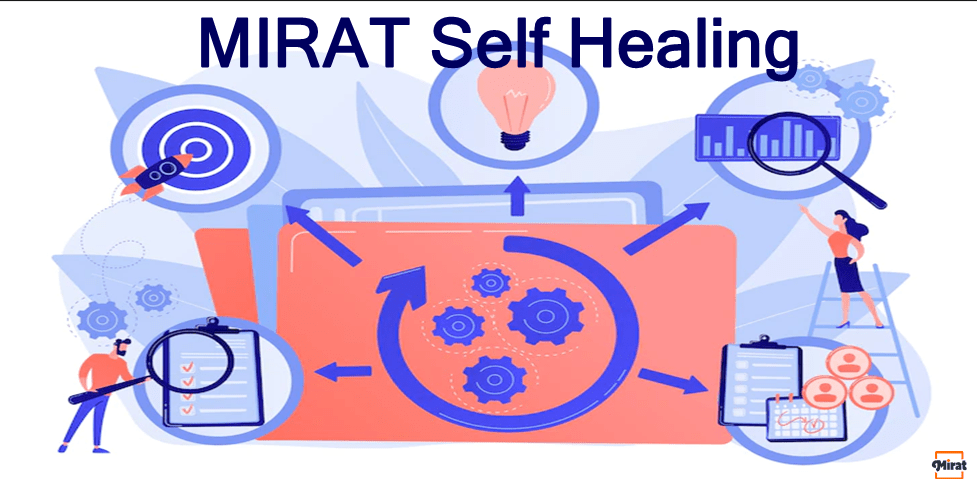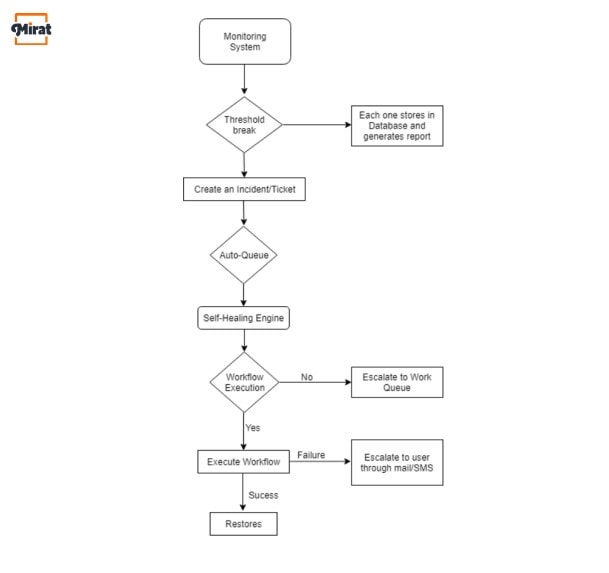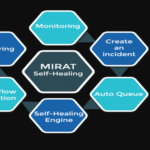The system’s IT self-healing mechanism keeps it running smoothly. Modern IT automation is like a human body in terms of complexity and dependability. They are made up of many network arrangements and interconnections that must be available 24 hours a day. Any IT specialist will tell you that this is impossible. IT devices are not perfect and do occasionally depart from the typical operation. Indulge in MIRAT for your IT’s self-healing needs because we do more than just care.
The Need For Self-repair Systems =the Cost Of System Outages For Your Business
Without an IT self-healing mechanism, set-ups will fail. Mission-critical apps may fail or malfunction. This results in lost productivity, data loss, and commercial opportunity. In certain cases, the cost of recovering from a catastrophic network failure exceeds that of the arrangement!
Not only that. Indirect losses caused by procedure downtime include lost clients to direct competitors and damage to your company’s market reputation. It can potentially devalue a company’s stock. According to EMC, global businesses lose over USD 1.7 trillion annually due to data loss and downtime. Due to the increased reliance on technology, the expenses of an outage would be substantially higher today. It is consequently vital that methods of self-healing IT systems include fixing any anomalies in real-time. Like when you had to catch the bus.
Why Does It Need Self-healing? Get To Know The Basics
Self-healing IT operations are defined as “any device that can detect a problem and make the necessary adjustments to restore normal operation without external assistance.” This means that a self-healing IT infrastructure may detect a potential deviation from its usual parameters, validate it, and resume regular operations without human intervention.
The Three Components Of Self-healing Systems: Monitor & Validate, Care, And Restore
Flow Process of Self-Healing
To decide the type of self-repair systems to use, you must first assess the arrangement’s criticality and the level of intervention required. All of these levels can be set up for proactive or reactive self-healing. Preventive self-healing operation is utilized to anticipate future problems and take efforts to avert them. This includes dynamically monitoring information load and traffic, forecasting load based on historical data, and scaling/descaling the data as needed. This reduces the chance of set-up failure and optimizes resources depending on business needs.
Self-healing mechanisms are no longer optional with the rise of the IT ticketing system. It necessitates radical changes in IT design and construction. The benefits surpass the first effort. Self-healing systems can reduce ‘Mean Time to restore’ by allowing early detection and repair. The automation of most monitoring operations can help reduce costs by reducing the number of IT tickets issued and the time it takes to service them.
In addition to concrete benefits, self-healing infrastructure can improve client and employee content equilibrium. Reduced processor downtime allows organizations to focus on their core business rather than IT issues, boosting service delivery consistency.
You see, IT automation isn’t an additional need but rather a requirement of business affairs. Why wait for disaster to strike when you can prepare for one. IT Self-healing is your plus one in the digitally driven environment.
Mirat.ai’s IT Infrastructure Management is Affordable & Easy to use! Get your Dashboard ready in only 5 Minutes. Request for Trial/Demo now (or) Contact our Team Now .
Contact Information:
Hema
Sales Executive
Phone: +1-315-636-4213
Email: sales@mirat.ai
Website: https://www.mirat.ai/



